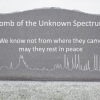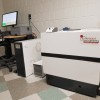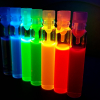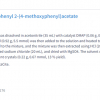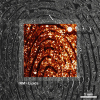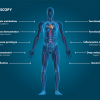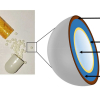A. Roque, I. Ponte and P. Suau*
Departamento de Bioquímica y Biología Molecular, Facultad de Biociencias, Universidad Autónoma de Barcelona, 08193 Bellaterra (Cerdanyola del Vallès), Barcelona, Spain. E-mail: [email protected]
Introduction
H1 linker histones are thought to be primarily responsible for the condensation of the thick chromatin fibre. It is currently accepted that linker histones could have a regulatory role in transcription through the modulation of chromatin higher order structure. The carboxy-terminal domain of Histone H1 (CTD) is the primary determinant of histone H1 binding to DNA in chromatin. The CTD has ~100 amino acids, with ~40% lysine.
Protamines are small basic proteins that condense the DNA in mature spermatozoa. Typical protamines are of simple composition and very arginine-rich, usually in the range of 60–80%, and are characterised by a number of stretches of arginine residues separated by neutral amino acids. Salmine is a typical fish protamine with 32 amino acids, 67% of which are arginine. Squid protamine has 58 amino acids of which 79% are arginine.
The CTD of histone H1 and protamine have little structure in aqueous solution, but become folded upon interaction with DNA. They behave, therefore, as intrinsically disordered proteins with coupled binding and folding.1,2 The inherent problems of the crystallographic approach have made it difficult for the study of the structure of the DNA-bound CTD and protamine. The complexes of DNA and the CTD have not been amenable to crystallisation so far and, in the case of nucleoprotamines, the protein, in contrast to DNA, is not sufficiently ordered to be visible in fibre-diffraction diagrams.3
We have applied Fourier transform infrared (FT-IR) spectroscopy to the study of a secondary structure of the DNA-bound CTD and also of protamine inside sperm nuclei. This technique is particularly useful for studying the complexes of DNA with basic peptides and proteins, because it is not affected by turbidity.
Experimental
The carboxy-terminal domain of histone H1 was measured at 5 mg mL–1 and the appropriate amounts of DNA in 10 mM HEPES buffering agent, pH 7, plus 10 mM or 140 mM NaCl. Salmon and squid sperm nuclei samples were measured at equivalent DNA concentrations of 5 mg mL–1 and 25 mg mL–1, in 10 mM HEPES plus 140 mM NaCl, pH 7. Samples were exchanged with D2O using successive steps of incubation with deuterated buffer.
Spectra were obtained with a nominal resolution of 2 cm–1. The number and position of the amide I band components were obtained by Fourier deconvolution and used for the curve fitting of the original envelope by an iterative process previously described.4 The DNA contribution to the spectra was subtracted by using a DNA sample of the same concentration. To precisely adjust the subtraction, the DNA spectrum was weighted in order to cancel out the absorption at 1087 cm–1 in the difference spectra. The band at 1087 cm–1 corresponds to the symmetric stretching vibration of phosphate in the sugar–phosphate backbone. This band is the most intense in the DNA spectrum; it shows no overlap with other vibrations, it is not affected by the interaction of peptides or proteins and its intensity is proportional to the DNA concentration. The correctness of this procedure can be empirically checked by recording spectra of complexes of different protein/DNA ratio (r). The spectra were independent of r, which indicates that the amide I region is not significantly affected by DNA spectral changes that could occur following the interaction with protein.
Results and discussion
IR spectroscopy of the carboxy-terminal domain of histone H1
As previously described,1 in aqueous solution, the amide I of the CTD is dominated by the random coil and turns in rapid equilibrium with the unfolded state. Small amounts of β-structure (9%) are also present.
The spectra of the complexes of the CTD with DNA were recorded both in H2O and D2O to facilitate the assignment of the amide I components. The vibrations of loops/flexible regions and the α-helix are only slightly affected by isotopic substitution and are thus found at similar positions in H2O and D2O, the α-helix at ~1652 cm–1 and loops / flexible regions at ~1643 cm–1; in contrast, deuteration has a great effect in the position of the random coil, so that in H2O it overlaps with the α-helix, while in D2O it overlaps with loops / flexible regions. Therefore, the α-helix can be estimated directly in D2O, whereas loops/flexible regions can be estimated directly in H2O. When both α-helix and loops/flexible regions are present in the protein structure, the percentage of random coil (RC) can be obtained either from the difference of the components around 1652 cm–1 in H2O and D2O or from the difference of the components around 1643 cm–1 in D2O and H2O, as indicated in the following equation:

where cb is the percentage of the assigned amide I component band in either H2O or D2O and cbRC is the percentage of random coil. β-Structure components appear at the same frequency in D2O and H2O, whereas turn components are slightly shifted to lower frequencies in D2O (Figure 1).

Upon interaction with DNA, the CTD of H10 acquired an extensively folded conformation. The structure of the bound domain was affected, to some extent, by salt concentration. In 10 mM NaCl, the DNA-bound CTD contained 19% α-helix, 22% β-structure, 27% turns, 25% loops/flexible regions and a residual 7% random coil. In physiological salt (140 mM NaCl), the CTD became fully structured, as indicated by the complete absence of random coil. Under these conditions, the CTD contained 24% α-helix, 25% β-structure, 18% loops flexible regions and 33% turns (Figure 2).

Phosphorylation by cyclin-dependent kinases at SPKK (Serine–Proline–Lysine–Lysine) motifs is the main post-translational modification of histone H1. We studied the effects of phosphorylation on the secondary structure of the DNA-bound CTD, which contains most of the phosphorylation sites of the molecule. The effects of phosphorylation on the secondary structure of the DNA-bound CTD were site-specific and depended on the number of phosphate groups. The greatest effects were observed in the fully phosphorylated (three phosphate groups) CTD that became an all-β protein with 72% β-structure and no α-helix (Figure 2). Partial phosphorylation increased the amount of undefined structure and decreased that of α-helix without a significant increase in β-structure.5
Secondary structure of protamine in sperm cell nuclei
The secondary structure of salmine and squid protamine bound to DNA inside sperm nuclei was examined by FT-IR spectroscopy.2 Spectra were recorded in D2O and 140 mM NaCl. Salmine had a component band representing 20% of the total amide I intensity at 1652 cm–1, which is the canonical position of the α-helix. Two other component bands at 1674 cm–1 (16%) and 1663 cm–1 (22%) were assigned to β-turns. The main amide I component of salmine was at 1642 cm–1, with 42% of the total intensity. Vibrations in this region are usually assigned to random coil/flexible regions, lacking stable patterns of intramolecular hydrogen bonding. Deconvolution of the amide I of squid protamine in sperm nuclei gave the same components as those observed in salmine. The β-turn components had similar proportions to those in salmine: 17% at 1669 cm–1 and 20% at 1662 cm–1. In contrast, the α-helix was dominant with 40% of the total intensity, while the component of random coil/flexible regions decreased to 23%. β-Structure components were not observed in either salmine or in squid protamine (Figure 3).

Models of nucleoprotamine have the hexagonal packing of the DNA molecules in common, but differ in the conformation and location of the protamine in the complexes.6,7,8 Some models assume that the protamine follows the path of either the narrow or the wide groove of DNA, with the guanidinium groups of consecutive arginines binding alternatively to the phosphate groups of either strand of the DNA double helix. In these models, the stretches of arginine lack intramolecular hydrogen bonding and, therefore, of a secondary structure of its own. Other models assume that the stretches of arginine adopt an a-helical structure when bound to DNA. In general, models of nucleoprotamine assume a uniform conformation for the arginine tracks and even for the entire protein. Our results show that the secondary structure of protamine in sperm nuclei is heterogeneous and it contains α-helix, β-turns and non-hydrogen bonded conformations. The results showing large differences in secondary structure between salmine and squid protamine indicate that there is not a single conformation for protamine in sperm nuclei, in spite of the common hexagonal packing of DNA molecules.
Conclusions
The possibility of deconvoluting the amide I band in components arising from different secondary structure motifs after precise subtraction of the DNA contribution, together with the insensitivity of IR spectroscopy to light scattering artefacts, has allowed us to show that both the CTD of histone H1 and protamines behave as intrinsically disordered proteins with coupled binding and folding. The CTD becomes fully structured upon interaction with DNA. The DNA-bound structure contains α-helix, loops/flexible regions, turns and β-structure. Phosphorylation can have profound effects on the DNA-bound structure. In sperm nuclei, protamines contain large amounts of defined secondary structure (α-helix and turns) stabilised by intramolecular hydrogen bonding.
References
- A. Roque, I. Iloro, I. Ponte, J.L.R. Arrondo and P. Suau, “DNA-induced secondary structure of the carboxyl-terminal domain of histone H1”, J. Biol. Chem. 280, 32141 (2005). doi: 10.1074/jbc.M505636200
- A. Roque, I. Ponte and P. Suau, “Secondary structure of protamine in sperm nuclei: an infrared spectroscopy study”, BMC Struct. Biol. 11, 14 (2011). doi: 10.1186/1472-6807-11-14
- P. Suau and J.A. Subirana, “X-ray diffraction studies of nucleoprotamine structure”, J. Mol. Biol. 117, 909 (1977). doi: 10.1016/S0022-2836(77)80005-3
- J.L.R. Arrondo and F.M. Goñi, “Structure and dynamics of membrane proteins as studied by infrared spectroscopy”, Prog. Biophys. Mol. Biol. 72, 367 (1999). doi: 10.1016/S0079-6107(99)00007-3
- A. Roque, I. Ponte, J.L.R. Arrondo and P. Suau, “Phosphorylation of the carboxy-terminal domain of histone H1: effects on secondary structure and DNA condensation”, Nucleic Acids Res. 36, 4719 (2008). doi: 10.1093/nar/gkn440
- L.C. Puigjaner, I. Fita, A. Arnott, R. Chandrasekaran and J.A. Subirana, “Modeling and refinement of the crystal structure of nucleoprotamine from Gibbula divaricata”, J. Biomol Struct. Dyn. 3, 1067 (1986). doi: 10.1080/07391102.1986.10508486
- R.W. Warrant and S.H. Kim, “a-helix-double helix interaction shown in the structure of a protamine-transfer RNA complex and a nucleoprotamine model”, Nature 27, 130 (1978). doi: 10.1038/271130a0
- J.A. Subirana, “Protein-DNA interactions in spermatozoa”, in Comparative spermatology 20 years after, Ed by B. Baccetti. Raven Press Publishers, New York, USA, p. 89 (1991).









